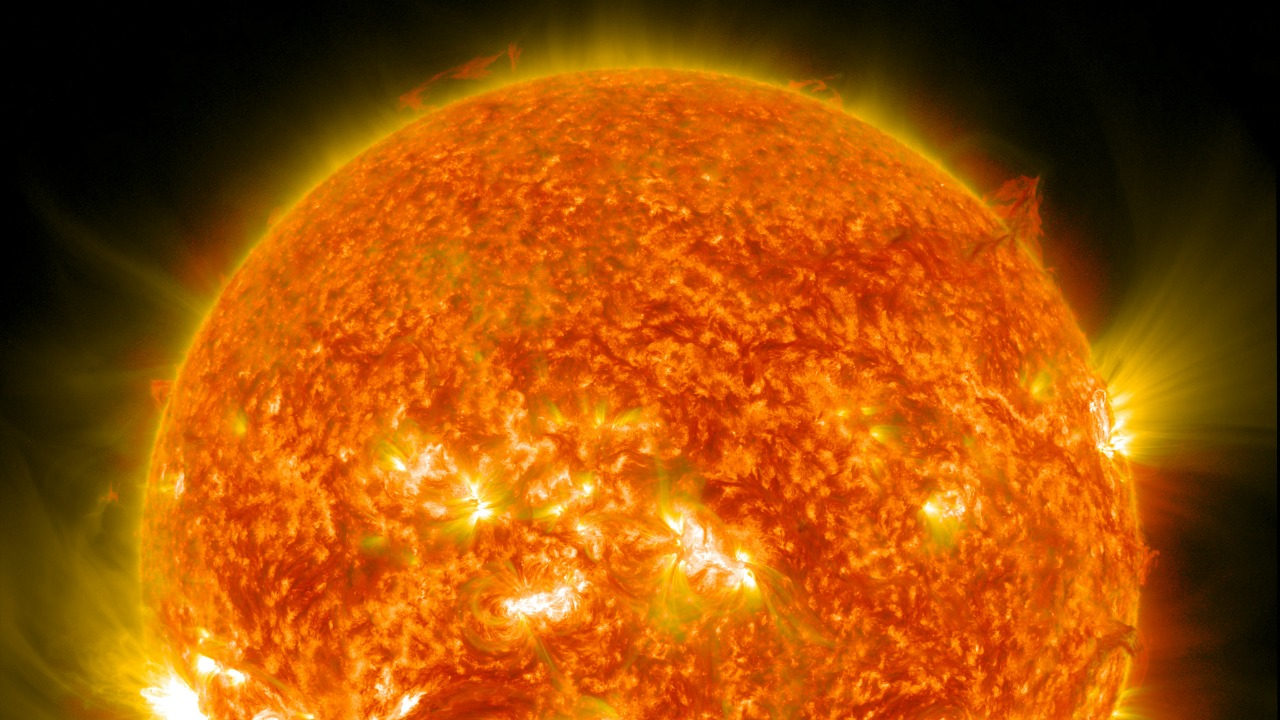
Solar flares, the sudden bursts of radiation that erupt from the Sun’s atmosphere, have become a topic of intense scrutiny for scientists. The potential of these flares to disrupt power grids and communications systems has led to increased monitoring and preparation efforts, particularly in light of recent forecasts of severe solar storms and confirmed explosive solar activity.
What Is a Solar Flare?
Solar flares are intense, localized explosions of magnetic energy that occur in the Sun’s corona, releasing radiation across the electromagnetic spectrum. These flares are part of the Sun’s 11-year activity cycle, reaching their peak during the solar maximum when sunspots are most numerous. The energy released during a solar flare can be equivalent to millions of 100-megaton hydrogen bombs exploding at the same time. This energy is emitted in the form of ultraviolet and X-ray radiation, as well as charged particles.
Understanding the basics and classifications of solar flares is crucial for predicting their potential impacts. As detailed in a BGR article, solar flares are classified based on their brightness in X-ray wavelengths, with X-class flares being the most intense.
How Do Solar Flares Form?
Solar flares form when twisted magnetic fields in sunspots build up energy until they snap and reconnect, propelling plasma outward. This process often involves coronal mass ejections (CMEs), which accelerate charged particles toward Earth. The visual aspects of solar flares, such as their bright bursts visible in X-rays and ultraviolet light, are both mesmerizing and powerful.
A Discover Magazine overview provides a comprehensive look at the stunning yet powerful nature of solar flares, highlighting their potential dangers and the importance of monitoring them.
The Science of Solar Flare Classification
The standard system for classifying solar flares uses X-ray flux measured by NOAA’s GOES satellites. Flares are categorized from A-class (weakest) to X-class (most intense), with subclasses like C1, M5, or X10 based on peak brightness in watts per square meter. X-class flares are 10,000 times stronger than A-class flares, making them particularly noteworthy.
The BGR guide provides a detailed explanation of how scientists use these metrics to predict the severity of solar flares, which is crucial for preparing for potential impacts.
Monitoring Solar Flares in Real Time
Monitoring solar flares is a round-the-clock job for experts like Mike Bettwy, a space weather forecaster at NOAA’s Space Weather Prediction Center. From his operations in Boulder, Colorado, Bettwy tracks flares using tools like the Solar Dynamics Observatory (SDO) and ground-based telescopes. These tools provide early warnings, keeping experts vigilant about escalation risks.
The New York Times feature on Bettwy’s role provides insight into the sleepless nights caused by unpredictable flare patterns and the importance of continuous monitoring.
Potential Dangers of Solar Flares to Earth
Solar flares pose significant risks to technology, including blackouts from induced currents in power lines and failures in GPS and radio signals during strong events. Human impacts include increased radiation exposure for astronauts and high-altitude flights, though ground-level threats are minimal due to Earth’s atmosphere.
A Discover Magazine analysis emphasizes the stunning displays of solar flares while also highlighting their real hazards to vulnerable systems.
Recent Solar Flare Events and Warnings
In May 2024, a severe geomagnetic storm was forecasted to approach Earth, prompting scientists to prepare defenses against flare-induced disruptions. More recently, in May 2025, scientists officially confirmed explosive solar activity with potential direct Earth impacts, including warnings about effects on communications and weather forecasting.
Reports from Quartz and Union Rayo provide detailed coverage of these events and the ongoing efforts to mitigate their potential impacts.
Future Implications of Solar Flare Activity
As we advance into the solar maximum in the current cycle, we could see more frequent X-class flares, which would heighten global vigilance. Ongoing research into better prediction models aims to safeguard infrastructure, informed by recent events.
The BGR article provides valuable insight into understanding escalation patterns in future flares, emphasizing the importance of solar flare classifications in predicting and preparing for potential impacts.
More from MorningOverview